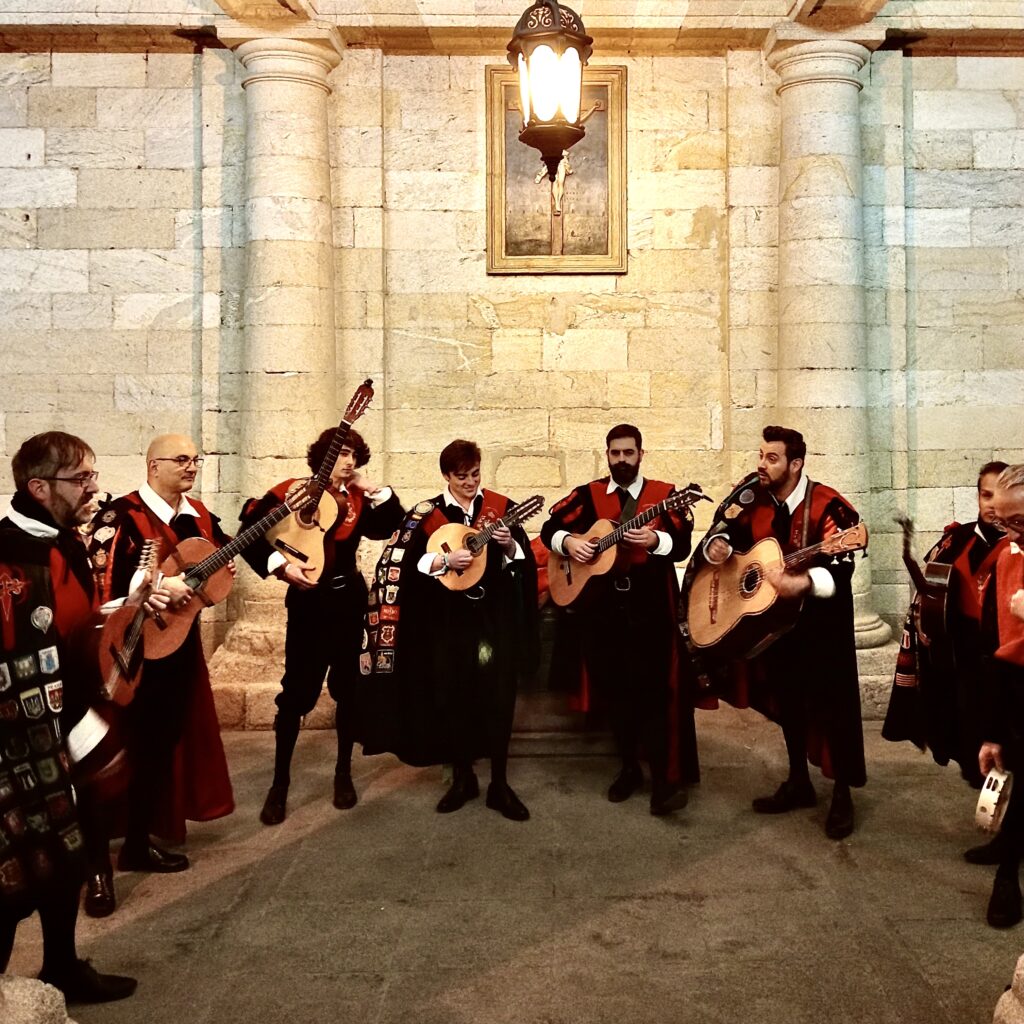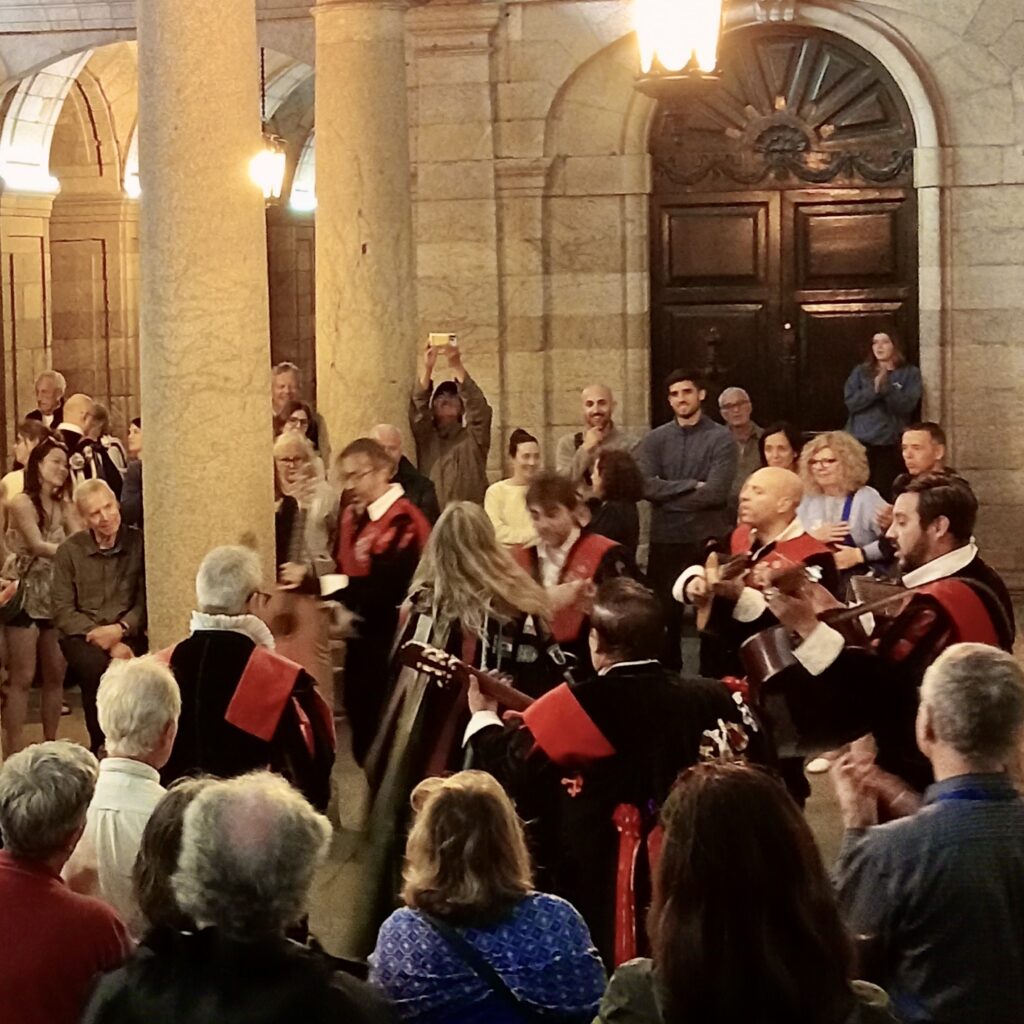La Tuna in Spain is a distinctive tradition that intertwines culture and music, originating in medieval Spanish universities. These musical groups are formed by university students and friends. The members always don traditional, Renaissance-style garb and perform a repertoire of folkloric songs.
The origins of La Tuna
The roots of La Tuna can be traced back to the 13th century when less-privileged students formed musical groups to earn money. Historically, tunas used to travel extensively, moving from one town to another. They would perform in plazas, taverns, and during local festivals. These journeys allowed them to spread their music and culture, creating a rich tradition that endures today. The routes used by these groups often followed significant educational and cultural pathways, linking major university cities like Santiago de Compostela, Salamanca and Madrid. By travelling these historical routes, tunas not only sustained themselves but also contributed to the cultural fabric of Spain.
Thus the origins of La Tuna are deeply rooted in the academic and social life of medieval Spain. Students from various schools would band together to form a tuna. The tradition of dressing in distinctive garb, including capes adorned with colorful ribbons and patches representing their university and school, added to their unique identity and charm.

la Tuna over time
As tunas traveled along their historical routes, they played an essential role in the exchange of cultural and musical influences. Their performances included a blend of traditional Spanish songs. These were often adapted with unique regional elements, showcasing a diversity of styles from different parts of Spain. This cross-cultural exchange helped enrich the musical landscape of the country. In this manner, tunas incorporated elements from Andalusian, Castilian, and Galician traditions, among others.
The itinerant nature of La Tuna also facilitated a sense of community and brotherhood among its members. Living and traveling together fostered strong bonds and a shared identity that transcended regional differences. This spirit of camaraderie is a hallmark of La Tuna. The tuna alumni often maintain lifelong connections and continue to participate in reunions and performances.
In addition to their musical contributions, tunas played a significant role in the social and festive life of the communities they visited. Their performances were eagerly anticipated events, bringing entertainment to towns across Spain. Tunas were often invited to perform at weddings, local fiestas, and other celebrations, further embedding them in the social fabric of the nation.
la Tuna today
Today, the tradition of La Tuna continues to thrive, with groups active in universities across Spain. Modern tunas uphold the legacy of their predecessors, maintaining the same commitment to musical fun and camaraderie. Their performances, whether in historic plazas or contemporary stages, continue to enchant audiences and preserve a cherished aspect of Spanish heritage.
Indeed, every evening in front of the Santiago de Compostela cathedral, you’ll find a tuna troupe performing to the delight of the pilgrims.
But most important: Don’t forget to leave a tip after the applause!






